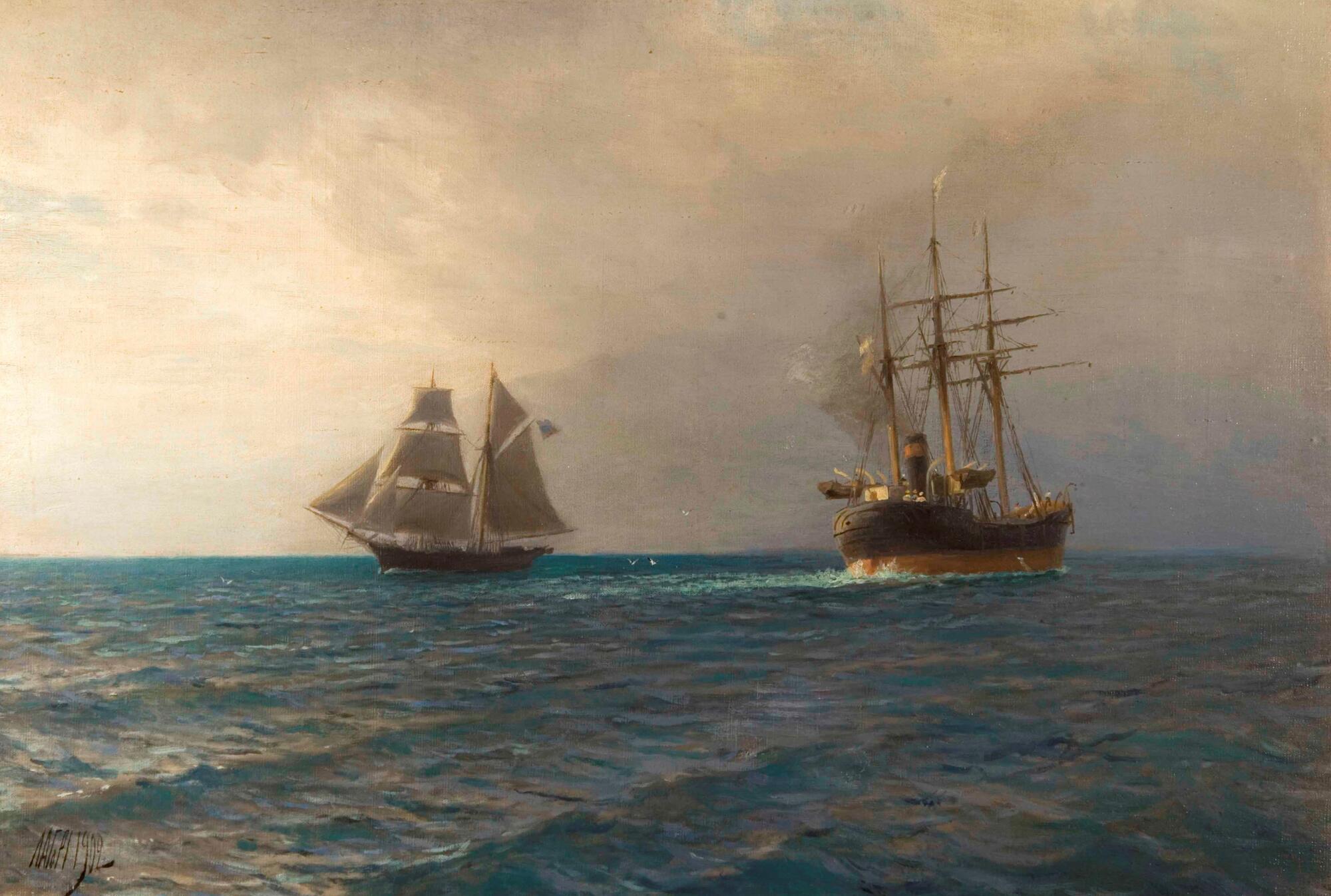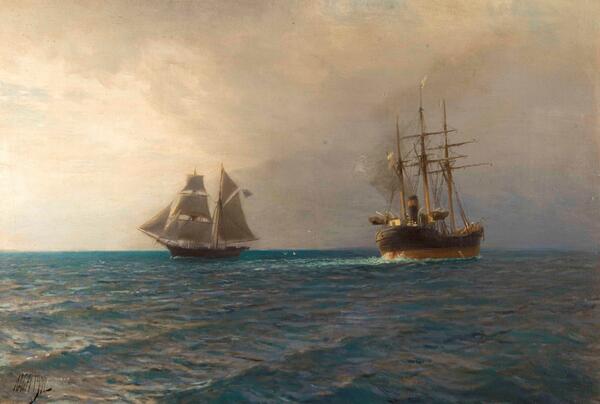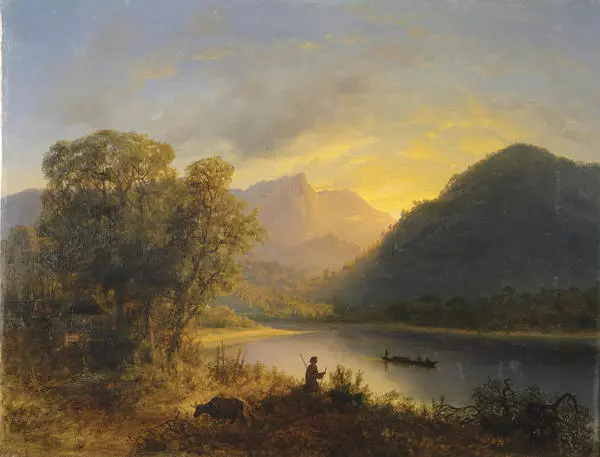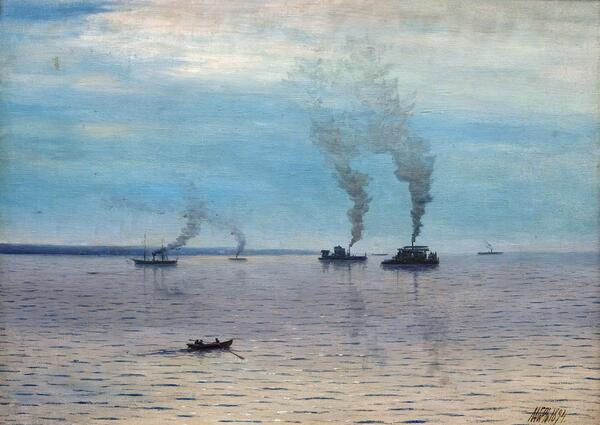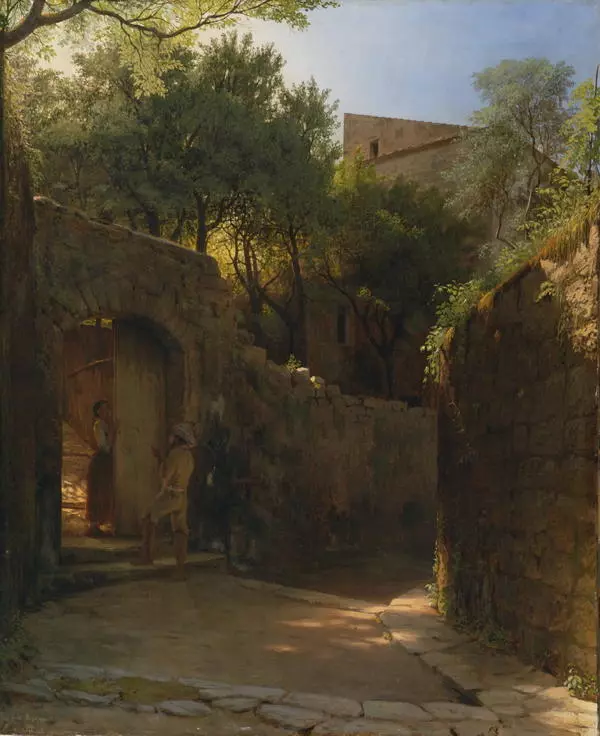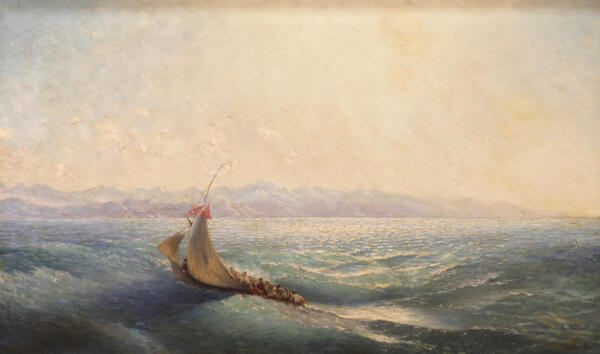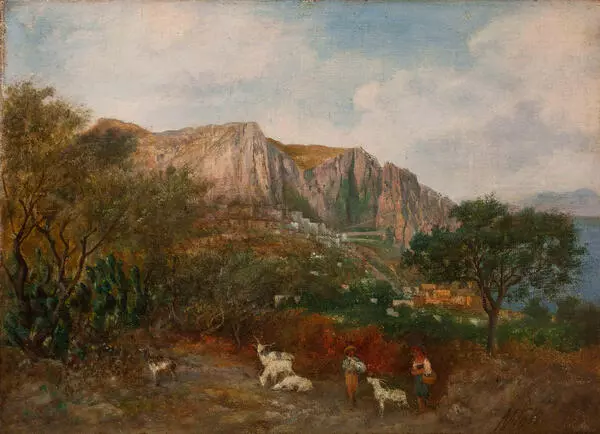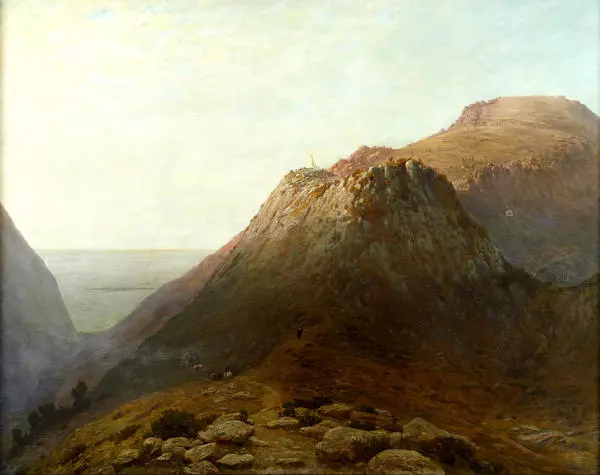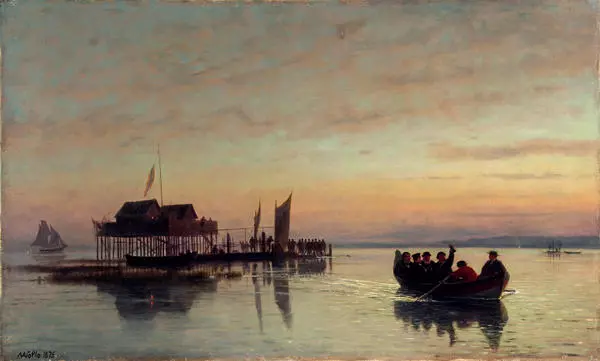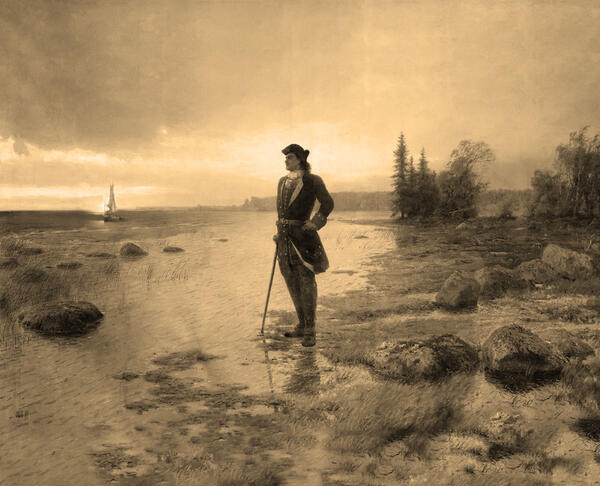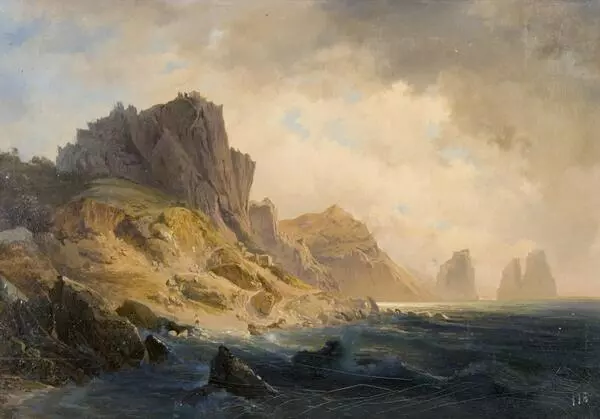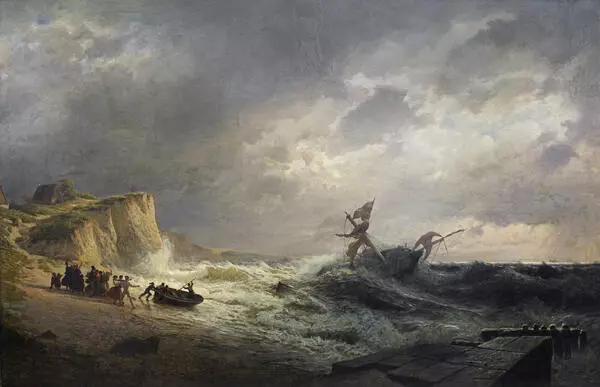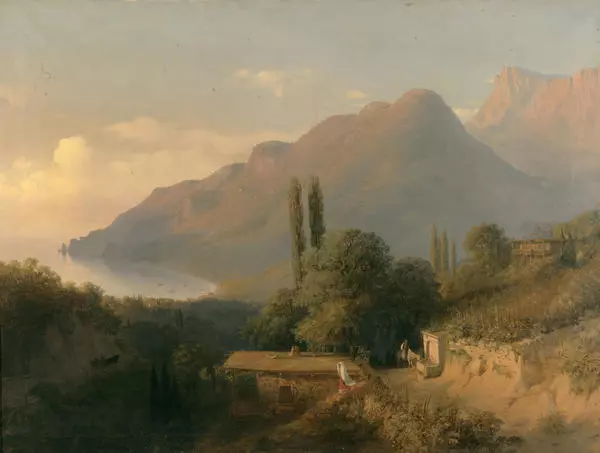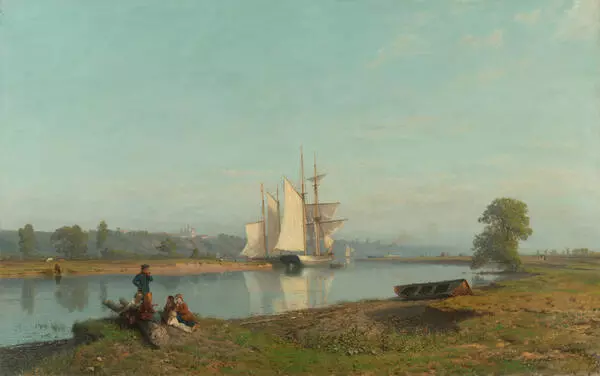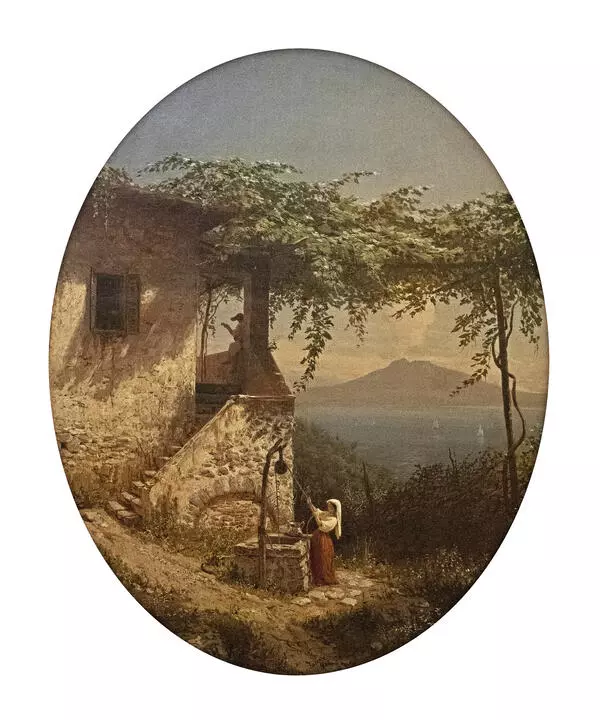The artist Lev Lagorio (1827-1905) is primarily known as a landscape painter, and he also worked in the portrait genre. He was the son of a Neapolitan consul in Feodosia, where he became a student in the workshop of Ivan Aivazovsky, having discovered the talent to paint. In the period from 1843 to 1850, he studied at the Academy of Arts in Saint Petersburg where his teachers were the painter Maxim Vorobyov, as well as battle painters Alexander Sauerweid and Bogdan Willewalde.
In his landscapes, especially those painted during his travels to the Caucasus, the influence of Aivazovsky is obvious, and not only in the choice of the sea as the main plot for the work. He was also interested in the features of nature reflection and various lighting effects. Nevertheless, unlike Aivazovsky, who created fantastic views from memory in the studio, other landscape painters painted from nature, which made them more believable.
During his trip to Italy, Lagorio — unlike the artists whose reference was the Italian work of the landscape painter Sylvester Shchedrin — did not capture widely known views of Italy. His artistic manner was characterized by careful reproduction of even seemingly insignificant details.
In the early 1870s, the artist moved away from the traditions of late romanticism, transforming his addiction of sunny landscapes towards the depiction of shipwrecks, sea storms, and moonlit nights. His palette acquired greater restraint and became closer to natural. His later landscapes most often captured the views of his native Crimea, which by that time had become a popular place for the summer trips of many artists.
The painting ‘In the Sea’ from the collection of the Tarusa Art Gallery belongs to the late period of Lagorio’s work. He depicted one of his favorite motives — a seascape with two sailing ships. To create the impression of cloudy weather, the artist used a combination of cold tones of blue, gray, and lilac. The details of the ship’s mast are accurately reflected. The soft oscillation of the waves was recreated with textured strokes of several shades. The artist even managed to depict a wake streams a trace from a sailing ship.
In his landscapes, especially those painted during his travels to the Caucasus, the influence of Aivazovsky is obvious, and not only in the choice of the sea as the main plot for the work. He was also interested in the features of nature reflection and various lighting effects. Nevertheless, unlike Aivazovsky, who created fantastic views from memory in the studio, other landscape painters painted from nature, which made them more believable.
During his trip to Italy, Lagorio — unlike the artists whose reference was the Italian work of the landscape painter Sylvester Shchedrin — did not capture widely known views of Italy. His artistic manner was characterized by careful reproduction of even seemingly insignificant details.
In the early 1870s, the artist moved away from the traditions of late romanticism, transforming his addiction of sunny landscapes towards the depiction of shipwrecks, sea storms, and moonlit nights. His palette acquired greater restraint and became closer to natural. His later landscapes most often captured the views of his native Crimea, which by that time had become a popular place for the summer trips of many artists.
The painting ‘In the Sea’ from the collection of the Tarusa Art Gallery belongs to the late period of Lagorio’s work. He depicted one of his favorite motives — a seascape with two sailing ships. To create the impression of cloudy weather, the artist used a combination of cold tones of blue, gray, and lilac. The details of the ship’s mast are accurately reflected. The soft oscillation of the waves was recreated with textured strokes of several shades. The artist even managed to depict a wake streams a trace from a sailing ship.
